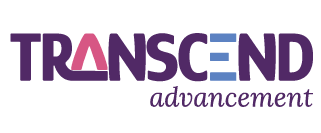Unlocking the Power of Your CRM
Best Practices for Database Management
Your donor database is one of your nonprofit’s most valuable assets—but only if it’s properly maintained and optimized. A well-managed Customer Relationship Management system (CRM) can streamline donor engagement, improve fundraising outcomes, and provide valuable insights that guide your nonprofit’s strategy.
However, many organizations struggle with cluttered, outdated, or underutilized CRMs, leading to missed opportunities and inefficiencies. In this guide, we’ll cover best practices to ensure your CRM is a powerful tool that drives success.
Step 1: Clean and Organize Your Data
A CRM filled with duplicate entries, incorrect donor details, or outdated contact information can create confusion and inefficiencies. To keep your data clean and actionable, follow these steps:
Regularly review and update donor records. Remove duplicates, correct inaccuracies, and fill in missing information.
Standardize data entry practices. Ensure that all staff follow consistent formatting for names, addresses, and donation records.
Set up routine data audits. Schedule quarterly or biannual reviews to keep your database fresh and functional.
A well-maintained database allows you to personalize outreach, segment donors effectively, and build stronger relationships.
Step 2: Segment Your Donors for Personalized Engagement
Your CRM holds a goldmine of insights—but only if you’re leveraging donor data strategically. One of the most powerful ways to use your CRM is through donor segmentation.
Segment donors based on:
Giving history: Major donors, recurring donors, lapsed donors, first-time donors.
Engagement level: Volunteers, event attendees, newsletter subscribers.
Demographics: Location, age group, interests.
With proper segmentation, you can send tailored messages that resonate with each donor group. For example, major donors may receive personalized impact reports, while new donors might get a welcome email series introducing them to your mission.
Step 3: Automate Processes to Save Time
Automation can make CRM management more efficient and effective. Many modern CRMs allow you to:
Automate donor acknowledgments and receipts. Set up immediate thank-you emails after a donation to enhance donor stewardship.
Schedule follow-up reminders. Automate prompts for staff to check in with major donors or reach out to lapsed supporters.
Trigger engagement campaigns. Set up workflows that send personalized emails based on donor behavior, such as event participation or recurring gift anniversaries.
Using automation ensures that no donor falls through the cracks while freeing up valuable staff time.
Step 4: Track Key Metrics to Inform Strategy
Your CRM provides critical insights into your fundraising performance. Be sure to track:
Donor retention rate – How many donors continue giving year after year?
Average gift size – Are donors increasing their contributions over time?
Acquisition vs. retention – Are you bringing in new donors while keeping existing ones engaged?
Lapsed donor trends – Who has stopped giving, and how can you re-engage them?
By regularly analyzing CRM data, you can adjust your fundraising strategies to maximize donor engagement and long-term sustainability.
Step 5: Train Your Team on CRM Best Practices
A CRM is only as effective as the team using it. Ensure that staff members are fully trained on:
How to enter and update donor information correctly.
How to pull reports and analyze key fundraising metrics.
How to use automation and segmentation tools.
Offering ongoing training and refresher sessions will help staff get the most out of your system.
Need Help Organizing Your CRM? We’ve Got You Covered!
At TRANSCEND Advancement, we specialize in CRM optimization, data analysis, and donor engagement strategies that help nonprofits maximize their fundraising potential. Whether you need help cleaning up your database, training your team, or implementing smarter donor segmentation, we can provide the expertise and support to ensure your CRM is working for you. Ready to unlock the full power of your CRM?
